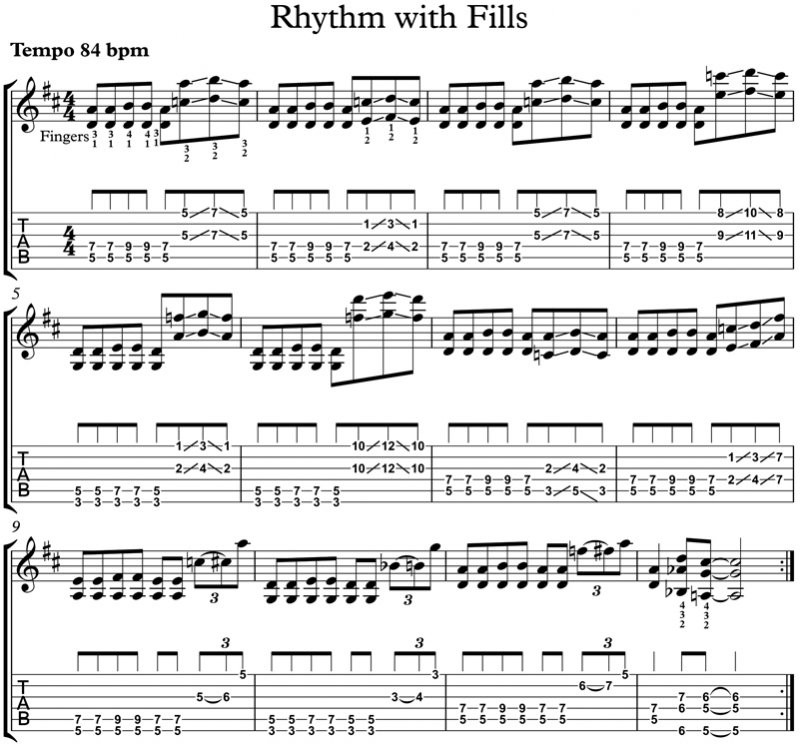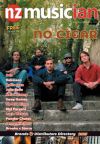Guitar Cool: Rhythm with Fills
Guitar Cool: Rhythm with Fills
In the last NZM issue I discussed that playing quality rhythm guitar is a must if you want to make a name for yourself as a guitar player. We spend around 95% of our time playing back up guitar with only around 5% of the time soloing, but many guitarists practice and learn the other way around.
This month’s lesson is another great rhythm guitar idea that can be heard often – playing a shuffle strum with a fill inserted into the line to make it more exciting. When inserting a fill you need to be very careful about what is going on in the band because it is very easy to overplay (play too much) or play over the top of someone else (like a solo over the vocalist). It is a common fault of guitarists to overplay or play something that doesn’t add anything to the song. And it’s the quickest way to get off side with your band mates.
If you look at the music example below you can see this played all over the neck. I did this for a reason – to stretch your fingers and brain.
Plus, this piece is totally over written – you would never play a rhythm part with this many fills within a band setting because it would be massively overplaying – but I wrote it like this to conserve page space. I would more than likely only play one or two fills each time round the blues progression, making sure I didn’t get in the way of a soloist or vocalist.
 In the first two lines of the music/tab, the first two and one half beats of the bar are commonly called a ‘shuffle’ rhythm, while the last one and a half beats contain the fill. The shuffle would be best played with a pick in a strumming style. The fills on these lines are 6th intervals for which you’d be best to use a hybrid picking style (pick and 3rd finger).
In the first two lines of the music/tab, the first two and one half beats of the bar are commonly called a ‘shuffle’ rhythm, while the last one and a half beats contain the fill. The shuffle would be best played with a pick in a strumming style. The fills on these lines are 6th intervals for which you’d be best to use a hybrid picking style (pick and 3rd finger).
The last line changes to three beats of shuffle and one beat of fill. The fills for this line contain two 6th intervals and one third interval but lead into the first note from a semitone below. The very last bar contains the turnaround back to bar one again.
The shuffle part of this piece can be a very tricky stretch for your 4th finger if it is not used to it, so it might pay to practise that part first before practising the fills. Also, pay close attention to the fingerings as this will make things a lot easier. I only wrote in the first two bars’ fingerings as the others are very similar.
Depending on your present skill level it could be quite challenging to change from the shuffle to the fill and back smoothly. If it is difficult for you then you need to slow the piece down to a very slow tempo. The top speed for this is 84-110 beats per minute – you might need to begin at around 40-50 beats per minute using your metronome.
Have fun with this piece, practise it a lot and you will find many places you can insert this type of playing into your music. If it is a little tricky remember you don’t have to have it down by tomorrow – take your time and your playing will improve immensely.
To see the video for this lesson go to www.guitar.co.nz/category/resources/freelessons/
Kevin Downing is a professional guitarist, teacher and author based in Palmerston North. His contact details, along with many freebies, are on his website at www.guitar.co.nz

